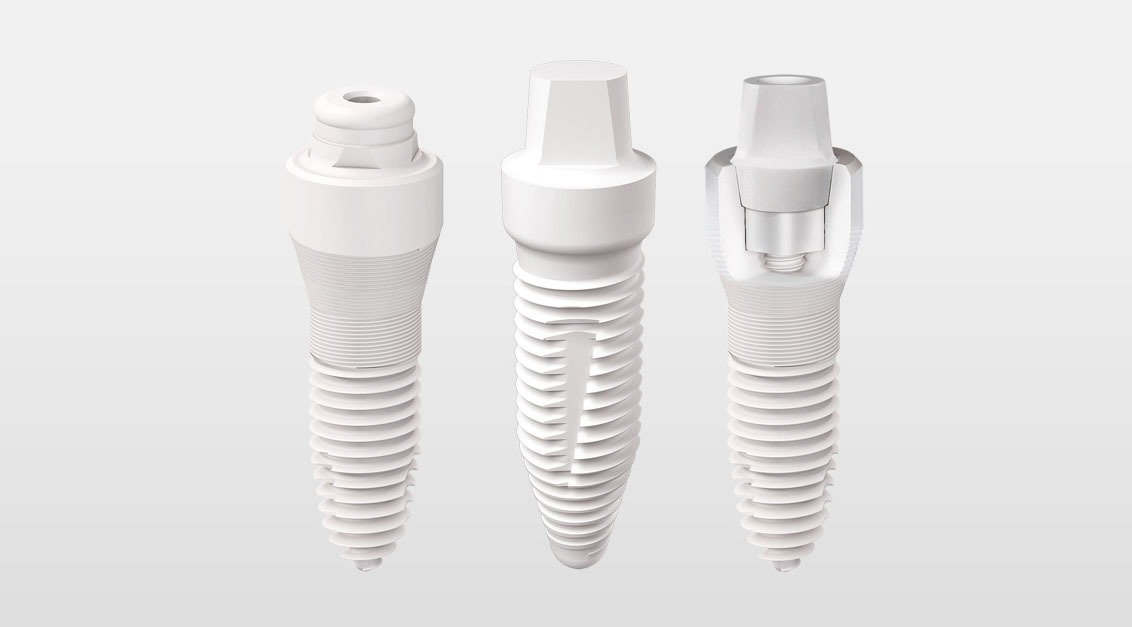Ceramic Implants
Outstanding biocompatibility and perfect aesthetics
The gold standard in implantology, which involves replacing missing teeth with artificial roots, is still titanium implants, and 99% of all implantologists have successfully used them for 40 years. Fortunately, in recent years, nearly all reputable implant manufacturers have introduced ceramic implants into the market, not because they are more biocompatible than metal, but primarily because of their aesthetic appeal due to their white color.
Aside from that titanium is not necessarily healthier than a root canal-treated tooth more and more people are experiencing hypersensitivity to titanium implants, which can be detected using a so-called TST/Titan Stimulation Test. Our immune systems are already primed by the use of massive amounts of titanium dioxide, which is used as a white pigment in toothpaste, cosmetics, supplements, medications, and even chewing gum.
Within a short time, titanium dioxide particles can be found in the surrounding tissue and local lymph nodes. It is precisely these particles that cause a foreign body immune reaction.
Since our goal has always been to achieve optimal patient health, we had to find a solution to this dilemma as a surgeon, because lost teeth must be replaced somehow.

For over 10 years now, we have exclusively used ceramic implants in our surgeries to gain as much practical experience in this field as quickly as possible. We can now look back on over 5000 ceramic implants that we have operated on.
It’s a common misbelief that ceramic implants break easily, are not stable, and do not heal properly.
The beauty of ceramic implants is that they only integrate into a healthy body and bone. It essentially grows completely with the body, but only if your body is capable of optimal regeneration. In contrast, a titanium implant almost always heals through a local cytokine reaction, which actually persists for a lifetime. This explains the criticism that ceramic implants do not integrate.
With this and the topic of systemic bone healing in mind we developed the Bone Healing Protocol in 2013. Years of expertise in functional, nutritional, and micronutrient medicine were invaluable in this endeavor. The first Bone Healing Protocol was developed using the cofactors Vitamin K2 and magnesium, which are necessary to tolerate a daily dose of 20,000 units of vitamin D3 without side effects, at a time when no one in dentistry had heard of vitamin D3.
Fortunately, this has dramatically changed in recent years. Today, the name Bone Healing Protocol is almost misleading, as it has evolved into a complex whole-body regeneration protocol over the years, but the foundation still remains high-dose vitamin D3/K2, magnesium, omega-3 fatty acids, and a variety of different amino acids and proteins.
What is still futuristic for most implantologists has been our standard for over 10 years, and all patients who come to us from around the world can benefit from our experience.
